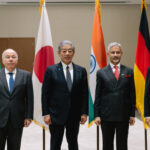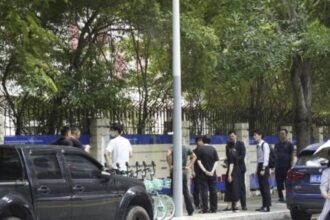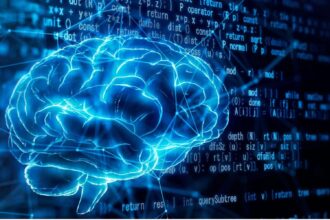China has made a significant leap in the field of nuclear energy by developing an innovative method to extract uranium from seawater. This breakthrough, achieved by scientists at the Qingdao Institute of Bioenergy and Bioprocess Technology (QIBEBT) under the Chinese Academy of Sciences, involves the use of a novel organic material that acts as a ‘detector’ to efficiently and economically extract uranium ions from the ocean.
The Challenge of Ocean Uranium Extraction
Uranium is a critical element for nuclear power, traditionally mined from rocks. However, as a non-renewable resource, the search for alternative sources has led scientists to the world’s oceans, which contain an estimated 4.5 billion tonnes of uranium in the form of dissolved uranyl ions. Despite this abundance, extracting uranium from seawater has been a formidable challenge due to its extremely low concentration—approximately 3.3 milligrams per tonne of seawater—and the presence of various other ions that complicate the extraction process.
The Innovative Solution: SA-DNA Hydrogel Microspheres
The Chinese research team has developed a new material known as SA-DNA hydrogel microspheres. These microspheres are composed of sodium alginate, a substance derived from kelp, combined with functional DNA strands that can specifically recognize and bind to uranium ions. The material’s structure includes numerous micrometre-sized pores, enhancing its ability to adsorb uranium from seawater.
This adsorptive material leverages the unique properties of DNA enzymes, which act as ‘detectors’ by becoming active only when they bind to specific metal ions. This specificity allows the material to selectively extract uranium ions even in the presence of other interfering ions.
Advantages of the New Material
The SA-DNA hydrogel microspheres offer several advantages over traditional methods of uranium extraction:
Cost-Effectiveness: The material is made from readily available and affordable components, making the extraction process economically viable.
Environmental Friendliness: The extraction process is environmentally friendly, avoiding the harsh chemicals and extensive energy use associated with conventional mining.
High Selectivity and Efficiency: The material demonstrates exceptional selectivity for uranium, with significantly higher uranium-to-vanadium ratios compared to other advanced adsorbents.
Mechanical Robustness and Recyclability: The microspheres are mechanically robust and can be reused, further reducing the overall cost and environmental impact.
Implications for the Future
This breakthrough has significant implications for the future of nuclear energy. By providing a potentially inexhaustible source of uranium, it could help secure a stable supply of fuel for nuclear reactors, supporting the global transition to cleaner energy sources. Moreover, the technology could be adapted to extract other valuable metals from seawater, broadening its applications and benefits.
China’s development of SA-DNA hydrogel microspheres represents a major advancement in the field of nuclear energy. By overcoming the challenges of extracting uranium from seawater, this innovative material holds the promise of a more sustainable and economically viable future for nuclear power.
ALSO READ: China fact check: Pioneering independent fact-checking in China














Thanks for sharing. I read many of your blog posts, cool, your blog is very good.